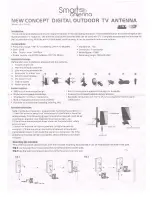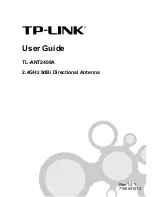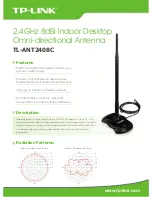
JODY-W1 antenna reference design
UBX-18017767
Page 1 of 3
JODY-W1 antenna reference design
Topic :
JODY-W1 antenna reference design
Doc.No:
UBX-18017767
Revision R01
Date:
Name
Signature
Created
24-Apr-2018
Stefan May
smay
Checked
Released
We reserve all rights in this document and in the information contained therein. Reproduction, use or disclosure to third parties without express authority is strictly forbidden.
© 2018 u-blox AG
1
Scope
This document defines the essential specifications necessary to implement the JODY-W1 antenna
reference designs. It is part of the equipment certification application issued to FCC and IC. The
information contained herein and its references should be sufficient to guide a skilled person in an
attempt to implement the design on a host carrier. It will provide the designer with PCB layout
details and expected performance specifications.
The document supports a connector-based designs for the use of external antennas (one for each
antenna pin of the module)
2
FCC/IC ID reference
Model
FCC ID
IC ID
JODY-W164-03A
XPYJODYW164
8595A-JODYW164
JODY-W164-07A
XPYJODYW164-07A
8595A- JODYW16407A
Table 1: FCC and IC IDs for different models of JODY-W1 series
3
General description and requirements
JODY-W1 series module provides three RF interfaces for connecting the external antennas.
Antenna ports ANT0 and ANT1 have a nominal characteristic impedance of 50
Ω
and must be
connected to the related antenna through a 50
Ω
transmission line to allow proper impedance
matching along the RF path; a bad termination of the pin may result in poor performance or even
damage to the RF section of the module.
The ANT2 antenna port is not used on the JODY-W164-03A and JODY-W164-07A modules.
For optimal antenna performance in multi-radio mode, the isolation between the antennas must be
maximized; the designer must follow the requirements specified in Table 2 and Table 3 to ensure
good performance.





















